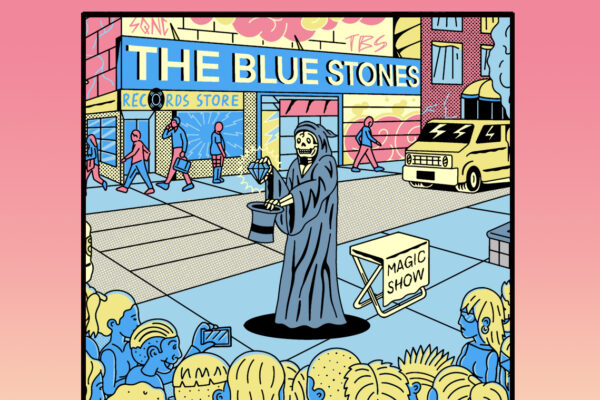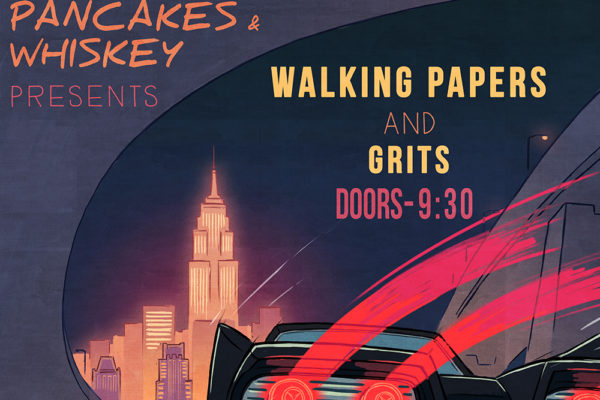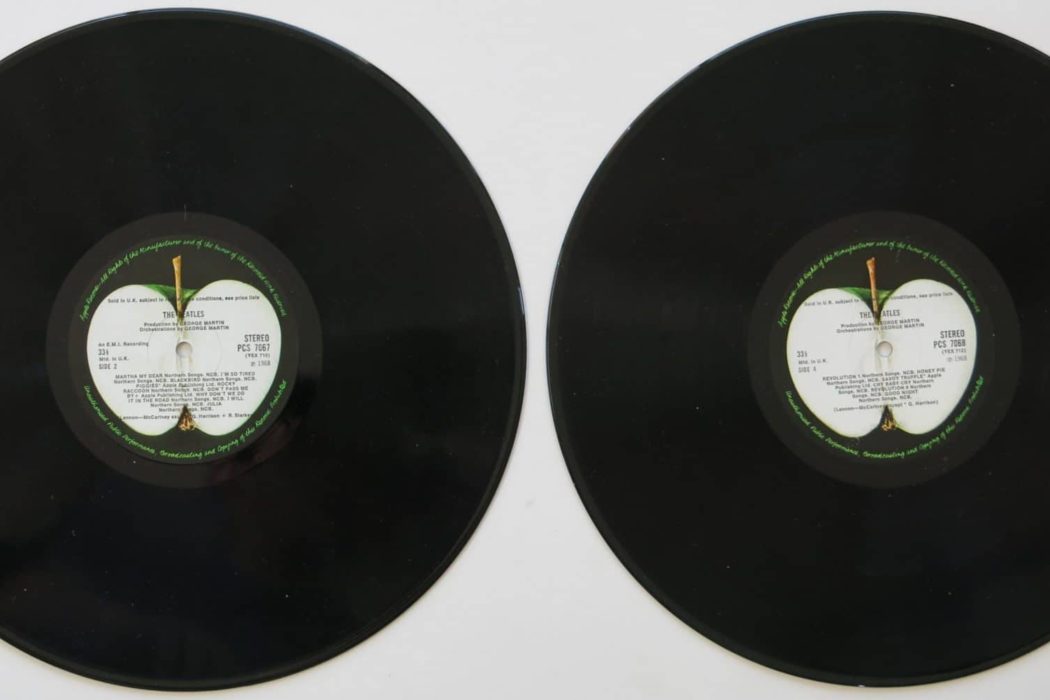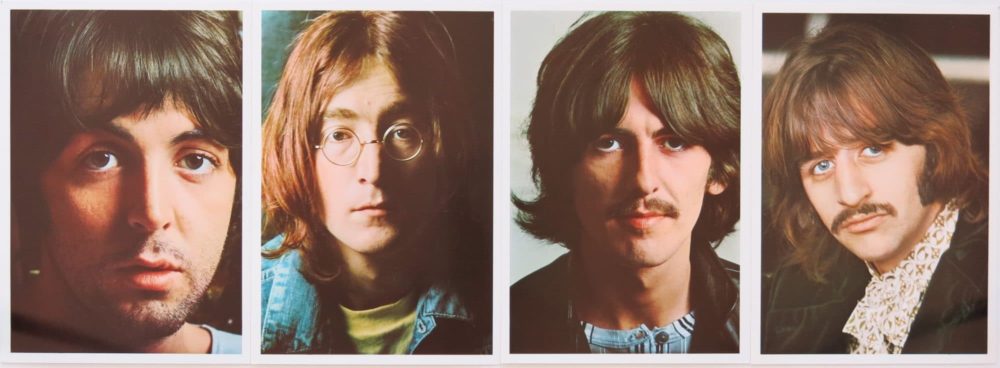On any given year, the moon doesn’t go through as many phases as The Beatles did. In less than a decade, they made albums whose cover art alone seemed to point to remarkable flourishes in tone and maturity. Although every time their experiences expanded, each new development did far more than reach their music -it inspired every fiber of it. All of which has made for an unparalleled collection of records that continue to feel as innovative as they did on the day they were made. After all, their imaginations were so colossal, so never-ending that they pushed the boundaries of the medium until every guidepost fell away. And though John Lennon, Paul McCartney, George Harrison and Ringo Starr first changed the world when they landed in America in 1964 -number 1 on the US charts with “I Want To Hold Your Hand” before they even walked off the plane- their entire career was a constant stream of world changing moments stretched to every corner of art, music, language and fashion. Every swift transformation so grand and sweeping and exciting that it’s hard to even envision such a drastic before and after. All we can do -if we weren’t there ourselves- is piece it all together and wish we were, taking in every photo and lyric as if we were looking at postcards from a vacation to a creative paradise that no one before or since has ever reached.
With the 1965 release of Rubber Soul, The Beatles were already light years away from the songwriters they were when they first visited America just one year before. For the first time, varied instrumentation and unusual recording techniques captured them challenging the very notion of what a four-piece rock band could and should sound like. Yet most revolutionary, even radical, was Harrison’s chance use of a sitar on “Norwegian Wood (This Bird Has Flown).” Before long, other bands followed suit and the traditional Indian string instrument was as familiar a sound on Western pop radio as a symbol crash. But as Harrison’s interest in Indian music blossomed, his enthusiasm for the Eastern teachings he had been introduced to also deepened. More and more after Rubber Soul, he would explore each in tandem, cloaking compositions like “Within You Without You” from the groups 1967 album, Sgt Pepper’s Lonely Hearts Club Band, with spiritually minded verses and the entrancing rhythms of a land he bore an increasing connection to. But in addition to broadening the scope of their sound, his reverence for the culture had encouraged the entire group to look inward. “All we wanted to do was be in a rock band but, as Shakespeare said, all the world’s a stage and the people are only players,” he later reflected in the 2000 book The Beatles Anthology. “We were just playing a part. Being The Beatles was like a suit that we wore for that period of time, but that isn’t us really. None of us are. Our true nature is looking to re-establish that which is within. All knowing.”
In February 1968, the most famous rock band in the world left the clubs and drugs of swinging London for the foothills of the Himalayas. The road that led them there was complex and unexpected, although not entirely unforeseeable. Spanning a spectrum of years and events beginning with Harrison’s study of the sitar, each circumstance acted as a bridge to another until The Beatles found themselves searching for something that -for a while- they could only find in Rishikesh, India. Traveling to the ashram of the Maharishi Mahesh Yogi to study transcendental mediation, they dressed in long, flowing robes, ate communal meals, strummed acoustic guitars and walked dirt paths surrounded by wilderness. But for perhaps the first time in a long time, the group that had reached an unthinkable level of fame and acclaim weren’t looking for a new chord to play or a new car to buy, but for a new way to live. “I think by 1968 we were all a bit exhausted, spiritually,” McCartney said of their state of mind in The Anthology. “We’d been The Beatles, which was marvelous. We’d tried for it not to go to our heads and we were doing quite well – we weren’t getting too spaced out or big-headed – but I think generally there was a feeling of: ‘Yeah, well, it’s great to be famous, it’s great to be rich – but what’s it all for?’” Yet even at a time when the band collectively turned to meditation, McCartney acknowledged in The Anthology that they devoted themselves to the teachings with varying degrees of dedication. “During Sgt Pepper, George was the most interested in Indian culture,” he explained. “We were all interested in it – but for George it was a direction.” In the end, they’d leave the ashram at different times under different circumstances. But while the trip may have been symbolic of a deeper commitment for some and a reflection of the spirit of the era for others, The White Album as we know it would not have existed without it.
That May, about a week before formal sessions for their new record began, the band convened at Harrison’s home to make demos and comb through ideas. They had returned to England with a massive amount of new material between them and by November, the harvest of songs that came to them in the wake of their stay was ready for release. Landing on shelves at the end of that month was a sprawling, self-titled double album that was raw and loud. “The experience of India and everything since Sgt Pepper was all embodied in the new album,” Harrison later recalled in The Anthology. “Most of the songs that were written in Rishikesh were the result of what Maharishi had said.” Nicknamed The White Album for it’s blank cover, the psychedelic, trippy vibe of Pepper had vanished, dissolving like the LSD that had inspired so much of their work and mindset just one year before. In its place was a more straightforward sound, as rough and tumble, pretty and peaceful as the landscape they lived on only months before. All of which has made The White Album a homespun and unconventional listen, brimming with unruly, sing-a-long choruses, soul mining lyrics and all out freak outs. It’s a wild, imperfect and rough-edged ride that’s pure, simple and powerful. Although apart from opening their eyes to a new perspective and encouraging a back to basics approach with the music that followed, their trip sparked massive interest in spirituality and meditation. They didn’t invent it or discover it, but their enthusiasm for the possibilities it could bring and the comfort it could provide was the only thing necessary for the movement to gain recognition amongst a generation adrift. Proving that even by 1968, The Beatles weren’t done changing the world just yet.
Article: Caitlin Phillips










